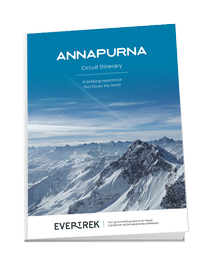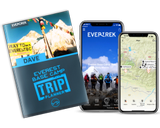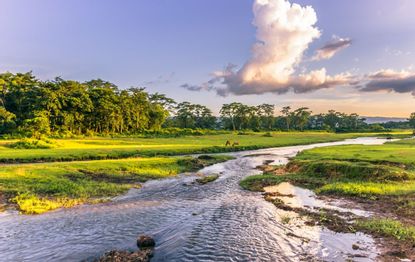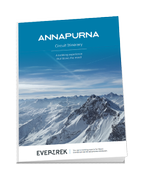Annapurna Circuit Trek in the Annapurna region of Nepal is the longest and one of the most diverse treks in the world. Walking the distance of 128miles through four districts (Lamjung, Manang, Mustang and Myagdi) and two zones (Dhaulagiri an Gandaki) allows you to encircle the Annapurna massif along with amazing views of mountains -Dhaulagiri, Nilgiri, Langtang Himal, Manaslu, Machhapuchhre, Gangapurna, and Tilicho Peak
The Annapurna Circuit trekking route isn’t just perfect for the dramatic views of lofty mountains but is also the best in terms of the diversity in climate (Tropic-600m to Arctic-5,416m), altitude (deepest gorge to the high pass – 5,400m), landscape (tropical forest featuring rare species of plants and animals, terminal moraine, snow line and barren land), trail (steep, narrow, icy, windy and dusty) religion (Hinduism, Buddhism, Bonpo and Tibetan Buddhism), pristine little settlements (Thini, Lurpa, and Nargon) and culturally prosperous tribal groups (Gurung, Thakali and Manangi); their culture, tradition, festival, food, dance and dialect.
Some of the major highlights of this trek around Annapurna are two river valleys (Gandaki & Marshyangdi), Thorung La pass (5,400m), Hindu and Buddhist holy site (Muktinath Temple), amazing fire-flame produced by natural gas from soil, water and rock (Jwala Mai Temple) and one of the oldest monasteries in the Annapurna region (Braga). In terms of Trekking, the Annapurna circuit is another superb opportunity to enjoy two contradictory baths – one is a sacred bath in water pouring through 108 bull-faced taps and a dip in chilling water in the Kunds (Saraswati and Laxmi) in the premises of Muktinath and the other one is a muscle relaxing bath in hot springs (Chame and Tatopani) en route.
You can also enjoy the early morning sunrise views in the Himalayas (from Poon Hill). An Annapurna circuit trekking map will also be provided for the convenience of trekkers to navigate these places. This ciruit Annapurna trek will definitely prove to be one of the rarest and special adventure experiences in your life.
Join us on the Annapurna Circuit Trek
- Our Annapurna Circuit Trek includes a night spent near the beautiful lakeside city of Pokhara
- Our Team in Nepal have been guiding around Annapurna since 2001.
- Trek over the challenging Thorang La Pass (5,416m)
- You stay in comfortable lodges (or “Tea Houses”) rather than camping & the fantastic Hotel Aloft in Kathmandu
- We take special care of our porters & guides. They are probably the best equipped in Nepal.
- Your kit bag is carried for you, so you only need to carry a day pack
- Prices include all trekking permits









